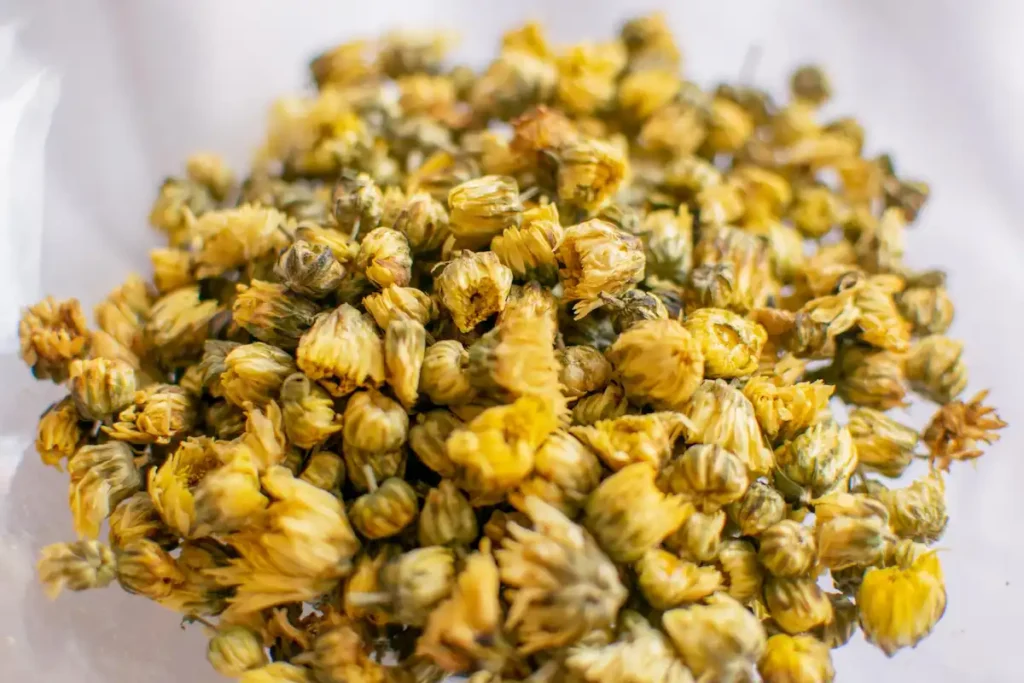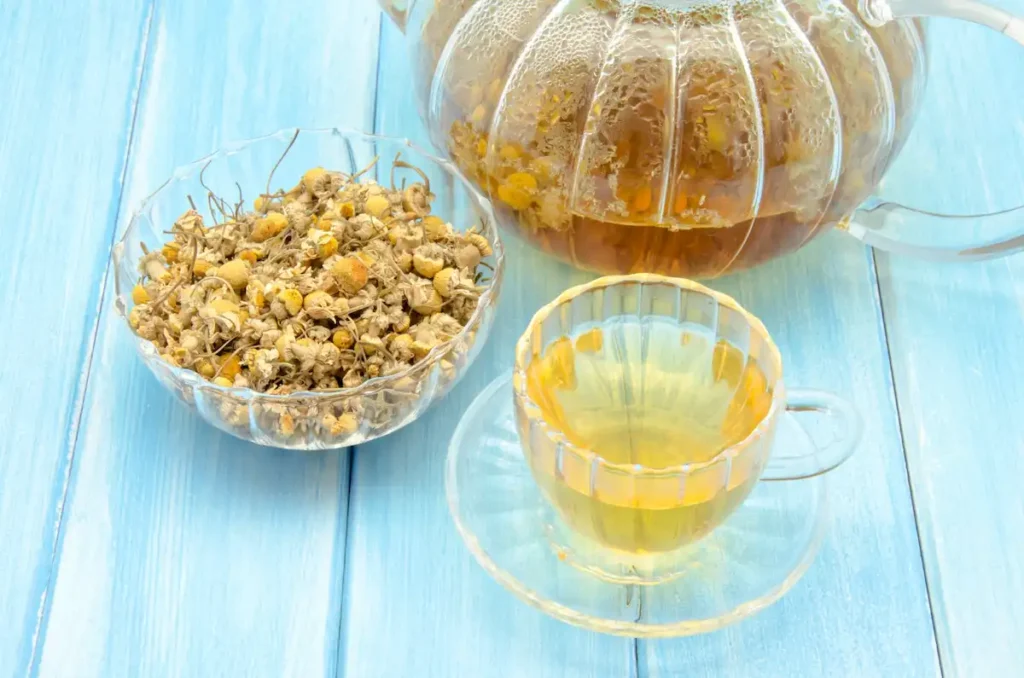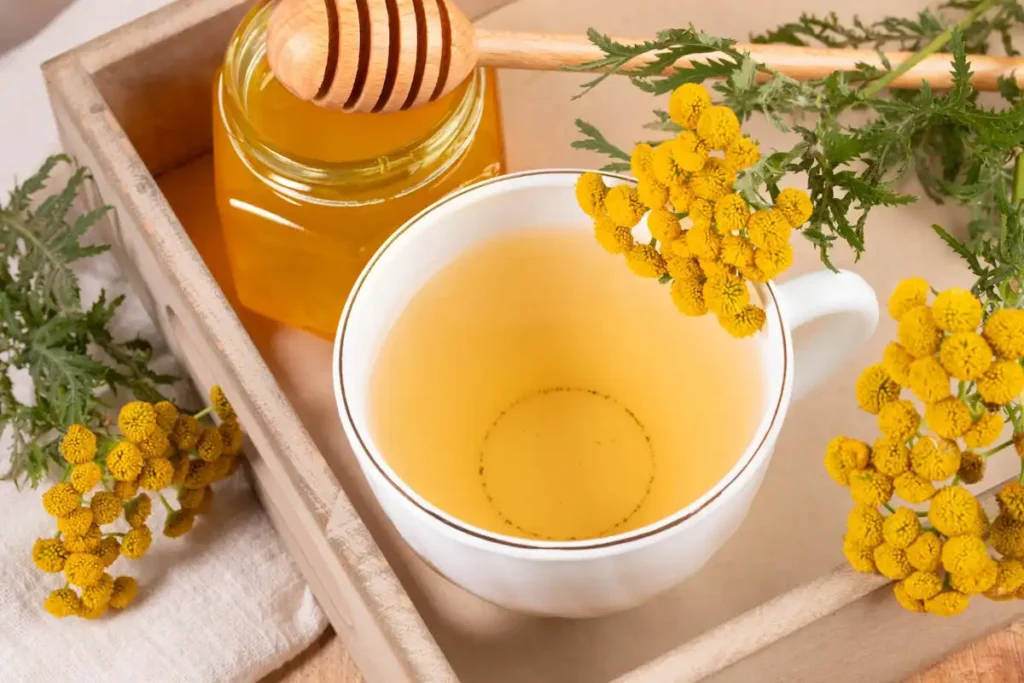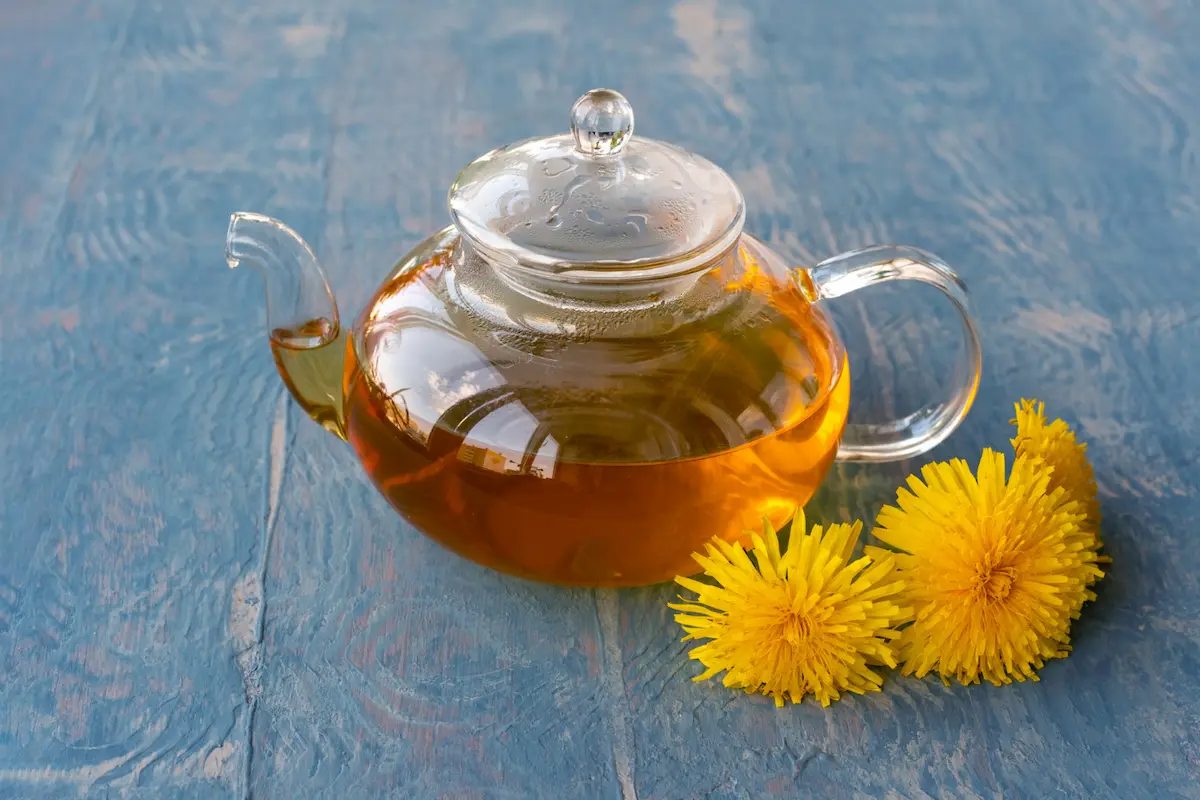Uncover the calming essence of chrysanthemum tea, a caffeine-free herbal brew packed with tradition, soothing benefits, and delightful flavor.
Introduction
Chrysanthemum tea has long been celebrated in various parts of Asia, particularly in China, where it symbolizes respect, nobility, and health. However, many people in the United States may be less familiar with this beautiful floral infusion. Therefore, it is worth exploring chrysanthemum tea’s rich cultural roots, its nuanced flavor profile, and its potential health benefits. Furthermore, for anyone seeking new experiences in the realm of herbal beverages—or simply looking for a soothing, caffeine-free alternative—chrysanthemum tea offers a fascinating gateway. In this article, we will dive into the vibrant history, botanical varieties, health benefits, brewing methods, and creative uses of chrysanthemum tea. By the end, you’ll discover why this gentle and refreshing drink has endured for centuries and continues to captivate tea enthusiasts worldwide.
Table of Contents
Throughout this comprehensive guide, we will also highlight some relevant articles from our site, EasyEatsDaily.com, that you may find intriguing if you enjoy exploring diverse culinary topics.
Historical and Cultural Significance
Chrysanthemum tea has a history dating back hundreds of years, especially within Traditional Chinese Medicine (TCM) and everyday Chinese tea culture. In many East Asian countries, the chrysanthemum flower is often associated with longevity, purity, and rejuvenation. Moreover, it frequently appears in festivals, celebrations, and ceremonies, emphasizing its cultural importance.
Spread to the West
Over time, chrysanthemum tea made its way to Western markets through trade and cultural exchange. Initially, it was mainly found in Asian grocery stores. However, global interest in herbal remedies and natural wellness has led to increased availability in mainstream supermarkets and specialty tea shops. Consequently, more people in the U.S. are embracing chrysanthemum tea for its subtle flavor and soothing qualities.
If you are curious about exploring other global culinary traditions, you may also enjoy our article on Authentic Greek Breakfast Recipes for a taste of the Mediterranean morning table.
Botanical Overview and Varieties

Chrysanthemum tea typically comes from the flowers of Chrysanthemum morifolium or Chrysanthemum indicum. These flowering plants, often called “mums,” thrive in East Asia, especially in China. However, they are also cultivated in other regions for ornamental use, herbal blends, and culinary applications.
White Chrysanthemum vs. Yellow Chrysanthemum
Two common varieties for chrysanthemum tea include white chrysanthemums (Báijú) and yellow chrysanthemums (Huángjú). Although both types share similar properties and a lightly sweet, floral taste, there can be subtle differences in aroma and color intensity:
- White Chrysanthemum: Offers a milder, more delicate flavor
- Yellow Chrysanthemum: Often has a richer, bolder taste
Quality Indicators
High-quality chrysanthemum tea buds look vibrant and intact, with a distinct floral fragrance. In addition, organically grown flowers are popular among those who wish to avoid pesticides or synthetic fertilizers. When shopping, look for reputable brands or sellers who adhere to strict quality controls.
If you’re researching ways to balance nutritious beverages with everyday meals, our Easy High Protein Breakfast Ideas might inspire you to add a wholesome protein boost alongside a soothing cup of chrysanthemum tea.
Nutritional Profile and Active Compounds
Although chrysanthemum tea is primarily enjoyed for its refreshing taste and potential health benefits, it does contain certain vitamins, minerals, and antioxidants.
Vitamins and Minerals
Chrysanthemum tea is often linked to small amounts of:
While these nutrients may not be present in large quantities, they can still supplement a balanced diet.
Antioxidants and Phytochemicals
Furthermore, chrysanthemum tea contains beneficial plant compounds such as flavonoids and phenolic acids. These antioxidants help protect the body against oxidative stress, which can damage cells over time.
Caffeine Content
Most varieties of chrysanthemum tea are caffeine-free, making them an excellent option for individuals who are sensitive to caffeine or prefer a calmer beverage. In addition, chrysanthemum tea has a negligible calorie count, which appeals to those monitoring their daily energy intake.
Health Benefits of Chrysanthemum Tea
Chrysanthemum tea has been valued for generations in Traditional Chinese Medicine. Although modern research on its properties is ongoing, many people believe it offers a host of potential benefits.
1. Anti-Inflammatory and Antioxidant Effects
Chrysanthemum tea may provide natural anti-inflammatory effects, largely due to its antioxidant content. Therefore, it might help reduce overall oxidative stress in the body.
2. Eye Health and Vision Support
In many cultures, chrysanthemum tea is associated with benefits for eye health. Some claim it can alleviate digital eye strain by refreshing tired eyes. However, comprehensive scientific studies are still needed to confirm these uses conclusively.
3. Immune System and Detox Support
When combined with a balanced diet, the antioxidants in chrysanthemum tea may aid immune function. In addition, some people use it as part of a cleansing regimen to support liver health. Although more evidence is required, it remains popular in herbal detox protocols.
4. Relaxation and Stress Relief
In Traditional Chinese Medicine, chrysanthemum tea is often used for its calming properties. Many claim it has a mild sedative effect that can soothe the mind. In addition, enjoying a warm cup before bedtime can sometimes ease the transition to sleep without the jolt of caffeine.
If you’re looking for even more ways to include soothing elements in your meals or snacks, check out our article about Authentic Molcajete Salsa Recipe for a fresh, stress-free take on classic dips.
Note: These potential benefits are based on both historical use and preliminary scientific findings. For personalized health advice, consult a qualified healthcare professional.
How to Brew Chrysanthemum Tea Perfectly

Brewing chrysanthemum tea is simple; however, certain steps can elevate its flavor and preserve its beneficial properties.
Step 1: Choose High-Quality Flowers
Opt for dried chrysanthemum buds that appear bright in color and free from debris. Organic buds are preferable if available, as they are grown without synthetic pesticides.
Step 2: Water Temperature and Steeping
- Boil fresh water to around 195°F (90°C).
- Place 3–5 chrysanthemum buds (or a teaspoon of dried petals) in a teapot or infuser.
- Pour the water over the flowers.
- Steep for about 3–5 minutes.
Oversteeping can lead to a slightly bitter aftertaste, so taste-test during the process and adjust to your preference.
Step 3: Enhance with Other Ingredients
- Honey or Rock Sugar: Adds sweetness and balances the floral essence.
- Goji Berries: Pairs well with chrysanthemum tea for a nourishing boost.
Step 4: Serve Hot or Iced
- Hot: Enjoy the tea as is, or strain into a teacup for a clear, bright infusion.
- Iced: Cool the tea, pour over ice, and garnish with a slice of lemon or mint leaf for extra refreshment.
Flavor Profile and Ideal Pairings
Chrysanthemum tea has a light, floral sweetness with gentle earthy notes. Therefore, it complements subtle flavors rather than overpowering them.
Pair with Delicate Foods
- Light Pastries: Butter cookies or plain sponge cake.
- Fresh Fruit: Slices of melon, apple, or grapes enhance the tea’s floral aspect.
- Mild Savories: Soft cheeses or lightly seasoned tofu dishes.
Serving Temperature Considerations
In traditional Chinese culture, chrysanthemum tea is often served hot even in summer because it is believed to have cooling properties. Nevertheless, modern tea enthusiasts also enjoy it cold for a refreshing pick-me-up.
Culinary and Household Uses
Although chrysanthemum tea is well-known for its comforting qualities, you can also get creative with its applications beyond the teacup.
In Soups and Congees
In certain Asian cuisines, chrysanthemum flowers are added to soups or congees for a subtle, pleasant fragrance. You can experiment by steeping the flowers in broths to create a mild floral note.
Herbal Remedies and Topical Applications
Some individuals use cooled chrysanthemum tea as a simple eye compress, believing it can soothe puffiness. In addition, you might find lotions or creams infused with chrysanthemum extracts in herbal skincare.
Wellness Rituals
Chrysanthemum tea can be integrated into mindfulness practices such as morning meditation or evening relaxation. Moreover, combining it with other calming herbs (like lavender) can create a personalized wellness ritual.
Potential Side Effects and Precautions
Though chrysanthemum tea is generally safe for most individuals, certain precautions should be noted.
1. Allergic Reactions
If you have allergies to plants in the daisy or ragweed family, you might experience reactions such as rashes or itching. Therefore, exercise caution if you are prone to these sensitivities.
2. Medication Interactions
Chrysanthemum tea may interact with medications, particularly blood thinners or certain diuretics. Consequently, consult a healthcare professional if you are on prescription drugs.
3. Moderation and Pregnancy
Pregnant or breastfeeding individuals should seek medical advice before trying new herbal teas, including chrysanthemum tea, to ensure safety.
Buying and Storing Tips
With chrysanthemum tea gaining popularity, it is now easier to find both online and in physical stores.
Where to Buy
- Asian Supermarkets: Often carry an extensive range of dried chrysanthemum buds.
- Specialty Tea Shops: Offer premium-grade, carefully sourced varieties.
- Online Retailers: Provide comprehensive product details and user reviews.
Storage Recommendations
Store dried chrysanthemum buds in an airtight container, away from direct sunlight and heat. In addition, keep them in a cool, dry place to maintain freshness for up to a year.
Classic Chrysanthemum Tea Recipe

Below is a detailed recipe that highlights the pure, floral essence of chrysanthemum tea while offering ideas for delicious enhancements.
Ingredients
- 5–6 dried chrysanthemum buds (about 1 tablespoon)
- 1 teaspoon goji berries (optional)
- 2 cups (475 ml) of water, heated to about 195°F (90°C)
- Honey or rock sugar to taste (optional)
Step-by-Step Instructions
- Measure the flowers: Place 5–6 dried chrysanthemum buds in a teapot or infuser. If desired, add goji berries for extra flavor and nutrients.
- Heat the water: Bring fresh water to a gentle boil, then let it cool slightly until it reaches around 195°F (90°C).
- Steep: Pour the hot water over the chrysanthemums. Let the infusion steep for 3–5 minutes. Taste-test the tea at the 3-minute mark and adjust the steeping time based on your preference.
- Strain and sweeten: Strain the liquid into a cup, removing the flowers and goji berries. Add honey or rock sugar if you prefer a sweeter taste, stirring until dissolved.
- Serve: Enjoy the tea hot for a comforting experience. Alternatively, allow it to cool and serve over ice for a refreshing chilled beverage.
Nutritional Information
Approximate Nutrition per 100 g of Prepared Chrysanthemum Tea
| Nutrient | Amount |
|---|---|
| Calories | 0–2 kcal |
| Carbohydrates | <0.5 g |
| Protein | 0 g |
| Fat | 0 g |
| Vitamin C | Trace |
| Vitamin A | Trace |
| Potassium | Trace |
| Calcium | Trace |
Note: The nutritional values are estimates and can vary based on flower quality, added sweeteners, and any other ingredients.
Frequently Asked Questions (FAQ)
What is chrysanthemum tea good for?
Chrysanthemum tea is primarily valued for its soothing properties and potential health benefits. It contains antioxidants that may support the immune system and provide mild anti-inflammatory effects. Traditionally, it’s also enjoyed for promoting relaxation and helping to cool the body, according to Chinese herbal practices.
Who should not drink chrysanthemum tea?
Individuals with known allergies to plants in the daisy or ragweed family should be cautious. Additionally, those on certain medications or with underlying health conditions should consult a healthcare provider before consuming chrysanthemum tea.
Can I drink chrysanthemum every day?
Many people drink it daily without issues, given that it is caffeine-free and generally well-tolerated. However, moderation is still advisable, and anyone with specific health concerns should seek professional medical advice.
Does chrysanthemum tea make you sleepy?
Chrysanthemum tea is often associated with calmness and relaxation. Although it is not a sedative like prescription medications, its mild soothing properties can help reduce stress. Therefore, it may contribute to better sleep quality for some individuals when enjoyed before bedtime.
Conclusion
Chrysanthemum tea seamlessly blends ancient tradition with modern wellness practices. Its floral aroma, gentle sweetness, and potential health perks make it an excellent choice for those seeking a soothing, caffeine-free brew. Moreover, its versatility allows it to shine in various recipes, from calming beverages to light culinary infusions.
Therefore, whether you are an herbal tea enthusiast, a curious newcomer, or simply someone looking to expand your beverage options, chrysanthemum tea is certainly worth a try. It embodies a timeless blend of flavor, culture, and well-being that has endured the test of centuries. We hope this guide inspires you to brew a fragrant cup of chrysanthemum tea and embrace its calming magic.
If you’re interested in other unique recipes, you might also enjoy our post on Ultimate Italian Chopped Sandwich for lunch ideas, or explore more breakfast inspirations in our Authentic Greek Breakfast Recipes.

